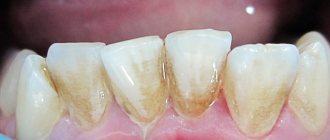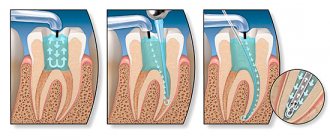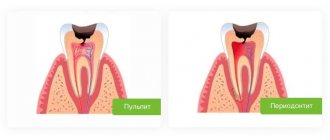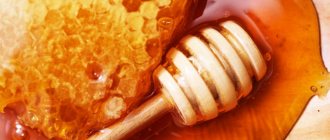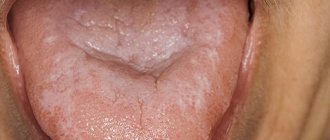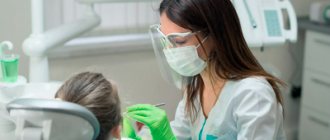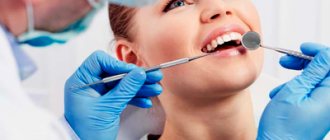Pan Marianna Yanovna. Dentist-therapist, 25 years of experience in the specialty. For more than 10 years he has been engaged in restoration work, microprosthetics, and is proficient in all manipulations of therapeutic dentistry, including therapeutic periodontology. She has been working at the Dentalika clinic for more than 3 years.
One of the primary questions of interest to patients is whether they have caries ? What is it?
Caries is a pathological process that manifests itself after teething in places where cariogenic (causing the development of caries) dental plaque accumulates, during which demineralization of the hard tissues of the tooth occurs with the subsequent formation of a defect in the form of a cavity.
There are a number of factors influencing the development of caries.
General cariogenic factors
- Poor nutrition.
- Diseases and dysfunction of internal organs.
- Unfavorable genetic code.
- Extreme impacts.
Local cariogenic factors.
- Dental deposits.
- Microflora.
- Violation of the properties and composition of oral fluid.
The diagram below gives a general idea of the causes of tooth decay.
Let's talk in more detail about local factors that have a direct damaging effect on the hard tissues of teeth. The most cariogenic value, both independently and in combination with other factors, is represented by dental deposits: dental plaque and dental plaque.
Scheme of caries development
Soft plaque –> dental plaque (70% composed of microbes) –> acidic environment under the dental plaque –> dissolution of enamel (caries).
The most favorite places for the localization of caries are the chewing surfaces of the lateral teeth, and in the area of natural grooves (fissures), (Fig. 1-1).
Often caries occurs in the cervical area (Fig. 1-5). The location of carious cavities on the contact surfaces of the teeth is more difficult in terms of treatment (1-2, 1-3).
Often, the patient consults a doctor when he himself discovers a deep cavity, or when painful sensations arise. It is not difficult to diagnose open carious cavities, however, caries often affects contact surfaces hidden from view in the neck of the tooth. At the same time, outwardly the tooth appears undamaged, and pain often does not occur immediately, because there is no direct impact on the damaged surface. When the walls become so thin that the “roof of the tooth” suddenly collapses, it becomes clear that something is happening to the tooth! At the same time, pain may appear. Only for a specialist is it not particularly difficult to identify hidden caries. That is why dentists strongly recommend that you come for an examination periodically, preferably once every 6 months! It is better to identify caries at an early stage and prevent the development of complications that entail suffering and large material costs.
Of course, patients are interested in how much caries treatment costs?
This depends on the depth of the cavity and location. Let's take a look at Figure 2 for a moment.
A cavity on the chewing surface, in the area of natural fissures (we already know that this is what the grooves on the surface of the tooth are called), depending on the depth, can be initial ( or , spot stage , Fig. 2-1) caries. A cavity within the enamel is a superficial caries (Fig. 2-2). If the enamel and dentin are affected, this is a medium caries (Fig. 2-3). With deep caries, the destructive process has gone very deep, almost to the boundaries of the cavity where the dental nerve is located. In such cases, you can focus on the prices given in the Dentaliki price list - in positions with the same names.
Now let's return to Figure 1. The greatest difficulty in treatment is presented by the cases illustrated in Fig. 1-2. Because:
- firstly, it is necessary to completely restore the shape of the tooth,
- secondly, each tooth must be separated from the adjacent tooth, at the same time, the edges of the teeth must be close enough to each other to prevent food from getting between them.
- thirdly, the surface of the filling must be perfectly smooth and aesthetically pleasing.
- In such cases, the work is assessed as tooth restoration .
Thanks to the availability of modern composite materials and various devices and instruments, such work is successfully carried out and, of course, this depends on the skill and professionalism of our doctors.
Special mention should be made about caries of the frontal (front) teeth . It is clear that for the lateral group of teeth , of course, first of all, the strength of the filling is important. It’s not for nothing that the side teeth are called chewing teeth! It is known that when chewing, colossal force is developed, and one can imagine what kind of load the teeth, and with them the restored surfaces of these teeth, take on!
The front teeth are not subject to such stress, but here it is more important to maintain an aesthetic appearance , choose the right color, transparency, ideal smoothness, but, at the same time, it is also necessary to properly restore contact between the teeth! Therefore, a slightly different price for the work performed is made here, which is reflected in the corresponding positions in the Dentaliki price list.
As for the materials used in our clinic (I will not dwell on the properties of composites and the requirements for them), preference is given to composite materials. This is a new generation nanocomposite. The material is universal, characterized by high strength and gloss retention after finishing, which makes it possible to use it in any clinical situations.
Diagnosis of caries
It is clear that before starting treatment, a correct diagnosis is necessary, especially if the patient complains of pain. We, therapists and dentists, try to keep the tooth “alive” whenever possible. In cases of superficial and medium caries this is quite possible. If you are concerned about a feeling of discomfort, slight pain when exposed to irritants (sour, sweet, mechanical when eating, or food getting stuck in the cavity), you can assume the presence of superficial or medium caries. It should be noted that some individuals with a reduced sensitivity threshold may not have any complaints. More often this happens with the chronic course of medium and even deep caries! If pain occurs from temperature stimuli - cold or hot (pain from hot may already be a sign of deeper and more serious destruction, most often when there is inflammation of the pulp!), more intense and prolonged, but still passing after the cessation of exposure, it can be assumed about deep acute caries. In some cases of deep caries, for a more accurate diagnosis or for therapeutic purposes, it is necessary to use various therapeutic materials containing calcium hydroxide in the form of temporary linings such as “Calcimol” (Voco), “Life” (Kerr), which have a pronounced anti-inflammatory and remineralizing effect (in such cases, treatment usually involves 2 visits), or permanent linings such as “Vitrebond”, “Vitremer”, which release fluoride, used under composite materials, or independently for a long period. If within the time limits established for stopping the inflammatory process in deep caries, the pain does not go away, or a feeling of discomfort remains, it should be assumed that the pulp is inflamed, in this situation the treatment tactics change, we are talking about a complication of caries.
Among the pressing problems of modern practical dentistry, dental caries occupies one of the leading places. Its medical and biological significance is determined not only by the huge prevalence of various forms of caries and its immediate complications (acute forms of pulpitis), but also by the negative impact on the body as a whole.
The high incidence of pulp damage, according to various statistics, is about 30% of all dental patients, and is largely due to the characteristics of both structure and function, constant contact with the external environment, the presence of microflora, a variety of types of load, etc.
Experience gained in recent years shows that it is possible to stop the increase in pulp pathology with therapeutic measures. In this regard, it is necessary to develop and widely implement measures to prevent diseases such as dental caries and its complications.
Dental caries (Caries dentis) is a pathological process that manifests itself after teething, during which demineralization and softening of the hard tissues of the teeth occurs, followed by the formation of a defect in the form of a cavity.
Dental caries is a key problem in dentistry, very interesting theoretically and extremely important in practical terms.
Etiology
About 400 theories have been proposed to explain the etiology and pathogenesis of dental caries. Without dwelling on all available theories, we will present those that, at least to some extent, provide an explanation of the origin of the most common pathological process - caries.
Modern concept of the etiology of caries.
The generally accepted mechanism for the occurrence of caries is the progressive demineralization of hard dental tissues under the influence of organic acids, the formation of which is associated with the activity of microorganisms.
Many etiological factors take part in the occurrence of the carious process, which allows us to consider caries a polyetiological (multi-causal) disease. The main etiological factors are:
1) microflora of the oral cavity;
2) nature and diet, fluoride content in water;
3) quantity and quality of salivation;
4) general condition of the body;
5) extreme effects on the body.
All of the above factors were called cariogenic and divided into general and local, which play an important role in the occurrence of caries.
General factors:
1) Poor diet and drinking water; 2) Somatic diseases, a shift in the functional state of organs and systems during the period of formation and maturation of dental tissues. 3) Extreme effects on the body; 4) Heredity, which determines the usefulness of the structure and chemical composition of tooth tissue. Unfavorable genetic code.
Local factors:
1) Dental plaque and plaque, isolating microorganisms; 2) Violation of the composition and properties of oral fluid; 3) Carbohydrate sticky food residues from the oral cavity; 4) Resistance of dental tissues, due to the complete structure and chemical composition of the hard tissues of the tooth; 5) Deviations in the biochemical composition of hard dental tissues and defective structure of dental tissues; 6) Condition of the dental pulp; 7) The state of the dental system during the period of formation, development and eruption of permanent teeth.
A cariogenic situation is created when any cariogenic factor or group of factors, acting on a tooth, makes it susceptible to the effects of acids. Of course, the trigger is the microflora of the oral cavity with the obligatory presence of carbohydrates and the contact of two factors with tooth tissue.
In conditions of reduced resistance of dental tissues, the cariogenic situation develops more easily and quickly.
Clinically, a cariogenic situation in the oral cavity is manifested by the following symptoms:
1) poor oral hygiene;
2) abundant dental plaque;
3) tartar;
4) crowding of teeth and malocclusions;
5) bleeding gums.
Dental resistance to caries or caries resistance is ensured by:
1) the chemical composition and structure of enamel and other tooth tissues;
2) the presence of a pellicle;
3) the optimal chemical composition of saliva and its mineralizing activity;
4) a sufficient amount of oral fluid;
5) low level of permeability of tooth enamel;
6) good chewing load and self-cleaning of the tooth surface;
7) properties of dental plaque;
 good oral hygiene;
good oral hygiene;
9) diet features;
10) correct formation of rudiments and development of dental tissues;
11) timely and complete maturation of enamel after tooth eruption;
12) specific and nonspecific factors for protecting the oral cavity.
The susceptibility of teeth to caries or caries susceptibility contributes to:
1) defective enamel maturation;
2) a diet deficient in proteins, macro- and microelements, and excess carbohydrates;
3) water with insufficient fluoride;
4) absence of pellicle;
5) composition of oral fluid, its concentration, viscosity, quantity and flow rate;
6) the biochemical composition of the hard tissues of the tooth, which determines the course of caries, since a dense structure with minimal spaces in the crystal lattice slows down the course of caries and vice versa;
7) state of the neurovascular bundle;
 functional state of organs and systems of the body during the formation and maturation of dental tissues;
functional state of organs and systems of the body during the formation and maturation of dental tissues;
9) improper development of the tooth due to common somatic diseases.
Pathogenesis
As a result of frequent consumption of carbohydrates and insufficient oral care, cariogenic microorganisms become tightly attached to the pellicle, forming dental plaque. When consuming sticky food, its remains harden in the retention points of the teeth (fissures, pits, contact surfaces, fillings, dentures) and undergo fermentation and rotting. The formation of dental plaque is influenced by:
1) the anatomical structure of the tooth and its relationship with surrounding tissues;
2) tooth surface structure;
3) food intake and chewing intensity;
4) saliva and gingival fluid;
5) oral hygiene;
6) the presence of fillings and dentures in the oral cavity;
7) dental anomalies.
Soft plaque has a porous structure, which allows liquid food components to penetrate into the saliva. This is a soft amorphous substance that adheres tightly to the surface of the tooth. The accumulation of end products of microorganisms and mineral salts in plaque slows down this diffusion, as porosity disappears. And this is a new substance - dental plaque, which can only be removed by force, but even then not completely. Under the dental plaque there is an accumulation of organic acids - lactic, pyruvic, formic, butyric, propionic, etc. The latter are products of fermentation of sugars by most bacteria during their growth. It is these acids that play the main role in the appearance of a demineralized area in a limited area of enamel. Neutralization of these acids does not occur, since there is a restriction of diffusion both into and out of dental plaque.
Dental plaque contains streptococci, in particular Str. mutans, Str. Sanguis, Str. salivarius, which are characterized by anaerobic fermentation. In this process, the substrate for bacteria is mainly carbohydrates, and for certain strains of bacteria - amino acids. Sucrose plays a leading role in the occurrence of caries. It is this that causes the fastest decrease in pH from 6 to 4 in a few minutes. The process of glycolysis occurs especially intensively during hyposalivation, xerostomia, and during sleep. And the activity of the fermentation process depends on the amount of carbohydrates involved. It has been established that during the period of consumption of excess sugars, the amount of plaque increases significantly.
The formation of plaque is influenced by the composition of food and its consistency. It has been observed that soft foods accelerate its formation as well as high sugar content. It has been proven that dental plaque forms faster during sleep than during eating, since salivation and mechanical stress help slow down the formation of dental plaque.
Plaque microorganisms are capable of fixing and growing on the hard tissues of the tooth, metal, and plastic.
In persons with multiple caries, there is an increase in the biochemical activity of streptococci and lactobacilli located on the tooth surface. High enzymatic activity of microorganisms is regarded as caries susceptibility.
Classifications of the carious process.
1. Topographical.
a) caries in the spot stage (white, pigmented); b) superficial caries; c) average caries; d) deep caries.
2. By localization:
1st class - carious cavities in the area of natural fissures of molars and premolars, as well as in the blind fossae of incisors and molars; Class 2 – carious cavities located on the contact surfaces of molars and premolars; 3rd class - cavities located on the contact surfaces of the incisors and canines without violating the integrity of the cutting edge; 4th class - cavities located on the contact surfaces of the incisors and canines with a violation of the integrity of the angle and cutting edge of the crown; 5th class – cavities located in the cervical areas of all groups of teeth; Class 6 is atypical, that is, where caries usually does not occur, these are the immune-resistant zones of the crown of the tooth.
Clinical picture.
Initial caries (spot stage)
With initial caries, there may be complaints of a feeling of sore throat. The affected tooth does not respond to a cold stimulus, as well as to the action of chemical agents (sour, sweet). Demineralization of enamel upon examination is manifested by a change in its normal color in a limited area and the appearance of matte, white, light brown, dark brown spots with a black tint. The process begins with the loss of enamel shine in a limited area. This usually occurs at the neck of the tooth near the gum. The surface of the spot is smooth, the tip of the probe slides over it.
Superficial caries.
For superficial caries, the occurrence of short-term pain from chemical irritants (sweet, salty, sour) is the main complaint. It is also possible that short-term pain may appear from exposure to temperature stimuli, more often when the defect is localized at the neck of the tooth, in the area with the thinnest layer of enamel, as well as when brushing the teeth with a hard brush.
Average caries.
With average caries, patients may not complain, but sometimes pain occurs from exposure to mechanical, chemical, thermal irritants, which quickly pass after the irritant is eliminated.
Deep caries.
Patients complain of short-term pain from mechanical, thermal, and chemical irritants, which quickly passes after the irritant is eliminated.
Caries as a multiple progressive process. Prevention of caries.
Treatment of dental caries is not always limited to filling carious cavities; it is necessary to stop the carious process. Against the background of pathological changes in the body, a decrease in its reactivity, and immune deficiency, caries often takes on the character of a multiple process with progressive tooth destruction . If such a pathology occurs, you must, first of all, be on your guard: something in your body is malfunctioning!
This requires:
- mandatory identification and elimination of somatic (that is, bodily, from the Greek “soma” - body, there are also mental) diseases (with the involvement of doctors of other specialties)
- carrying out important general strengthening activities aimed at improving the health of the body, including proper nutrition.
The main cariogenic dietary factor is an excess of easily digestible carbohydrates, supplied in the form of refined food, which, moreover, does not promote self-cleaning of the oral cavity, increases the accumulation of soft plaque on the teeth, and reduces the remineralizing ability of saliva. The consumption of easily digestible carbohydrates (and these are foods containing sugar and flour products) must be at least significantly reduced.
The consumption of a sufficient amount of biologically valuable proteins, which contain the required amount of amino acids in products of animal origin - beef, rabbit meat, poultry, fish, is encouraged. Among plant foods, beets contain a large number of essential amino acids.
An important component of nutrition are minerals, especially calcium, phosphorus, and fluorine. The most balanced product in mineral composition for the absorption of calcium is milk and dairy products (preferably fermented milk), including cheeses. Fish, eggs, and some plant products (cereals, peas, beans, legumes) also contain large amounts of minerals.
To absorb these microelements, vitamin D is necessary (butter, milk, egg yolk, caviar, liver and, especially, fish oil). Sufficient amounts of vitamin D are produced from cholesterol in the upper layers of the skin when exposed to ultraviolet rays during sun exposure or ultraviolet lamps.
Phosphorus is part of the mineral components of dental hard tissues (milk, cheese, nuts, fish, meat, egg yolk and some cereals).
Fluoride deficiency is of particular importance for the occurrence of caries . Fluoride is mainly found in drinking water. Increased fluoride content in some mineral waters and in sea fish - mackerel, sardine. A good additional source of fluoride is green tea. To reduce the effects of caffeine, it is recommended to drain the tea leaves after steeping and pour boiling water over the tea again for 20-25 minutes. This simple technique reduces the amount of caffeine in tea by 70-75%, which is especially important in childhood.
With multiple caries and its acute course, the properties of the oral fluid change and the viscosity increases. In this case, it is necessary to increase salivation, stimulating the remineralizing effect of saliva and reducing the formation of dental plaque. Intensive chewing of fairly coarse food promotes natural self-cleaning of the oral cavity and prevents the accumulation of dental plaque (plaque).
Professional oral hygiene is a procedure performed by a doctor to prevent caries. Includes cleaning teeth from hard dental deposits (tartar) using an ultrasonic scaler (scaling). Together with ultrasonic scaling, it is practiced to remove soft plaque and polish the surface of the teeth with an “Air-Flow” type device, or to use various cleansing pastes applied with brushes. You can read more about these procedures on our website in the “Professional teeth cleaning” section. Then fluoridation is performed on all tooth surfaces with a special composition “Bifluorid-12” (Voco). After completing the fluoridation procedure, it is recommended not to eat for 2 hours, eat only soft and liquid foods for 24 hours, and not brush your teeth. It is most effective to carry out professional hygiene 2 times a year. In special cases, every 3 months. The cost of a comprehensive professional hygiene procedure including 3 procedures for the entire oral cavity in our clinic costs the same as 3 for the cost of 2, even slightly cheaper!
Cariogenic factors
Conventionally, they can be divided into two types - general and local. They are equally responsible for the risk of dental caries.
Are common
Because of them, the human body does not receive enough microelements and vitamins necessary for health. They cause a change in the composition of dental tissues, as a result of which the tooth becomes vulnerable to caries.
- malnutrition;
- all kinds of diets;
- poor quality drinking water;
- somatic diseases;
- disturbances in the functioning of the endocrine system;
- extreme effects on the human body;
- poor heredity, as a result of which the chemical composition of dental tissues is disrupted.
Fissure sealing
Fissures are natural depressions, pits on the surface of the teeth. The fissures of molars (chewing teeth) are the most common location for caries , a kind of risk zone . An effective method for preventing fissure caries is their isolation from the action of cariogenic factors in the oral cavity.
For this purpose, the fissure sealing method is used. Its essence lies in the fact that anatomical formations are filled with special filling materials that prevent the access of saliva, microspores, and dental plaque. Sealing of an open (accessible for sealing) fissure is carried out without machine processing. If the fissure is closed (hard to access for processing), the stage of grinding it with a diamond bur is added. The use of sealants is an effective method of preventing fissure caries.
It is best to do sealing in childhood.
Recommended timing of sealing:
5-6 years - first permanent molars
9-10 years - first premolars
10-11 years - second premolars
12-13 years - second molars
Teeth treated with sealants (sealants) are 10 to 23 times less than untreated teeth!
Marianna Yanovna Pan doctor - general practitioner - dentist October 2009
Dear Colleagues! When copying information, placing a link to the source site is mandatory!
